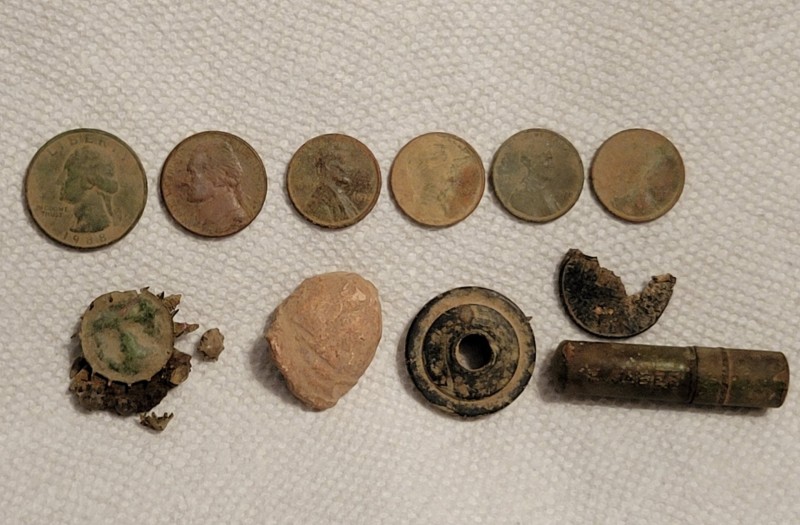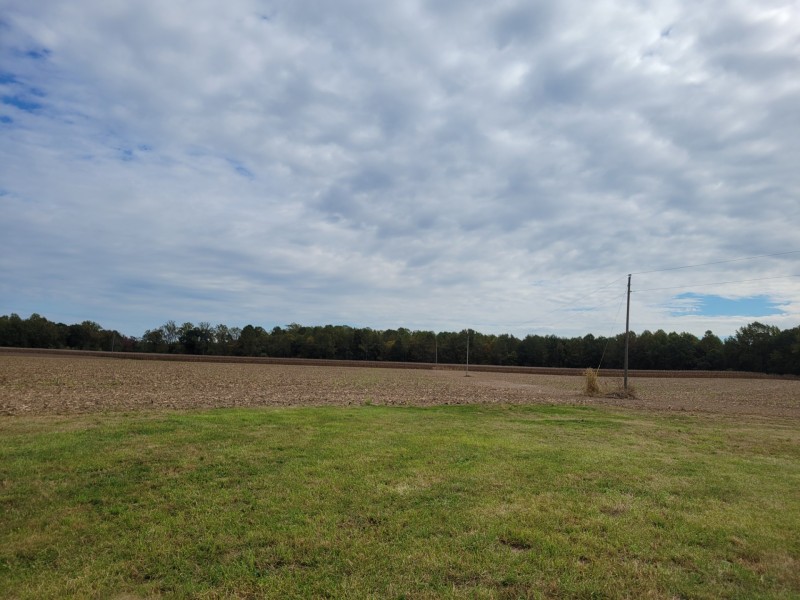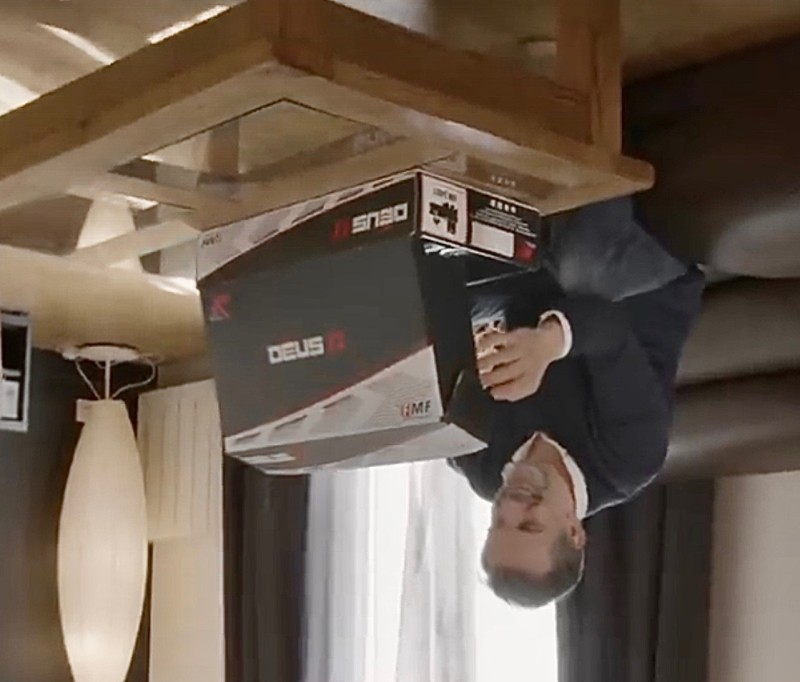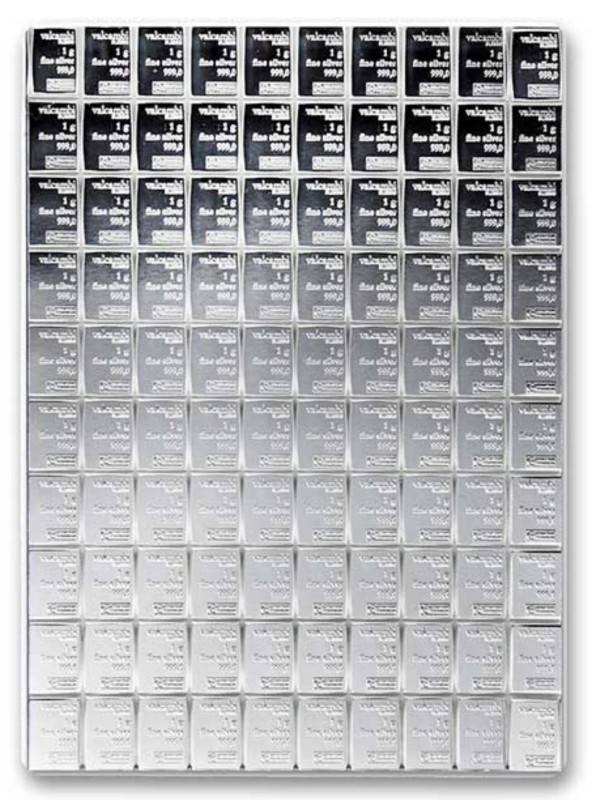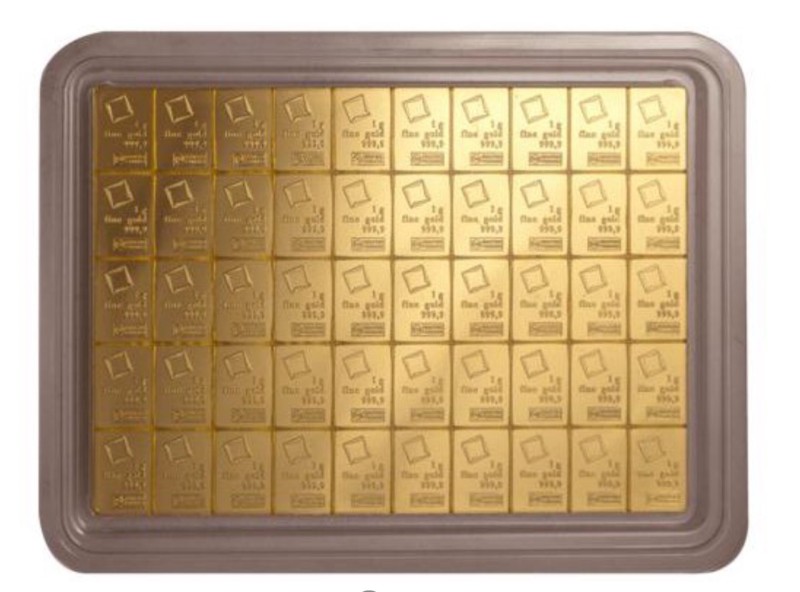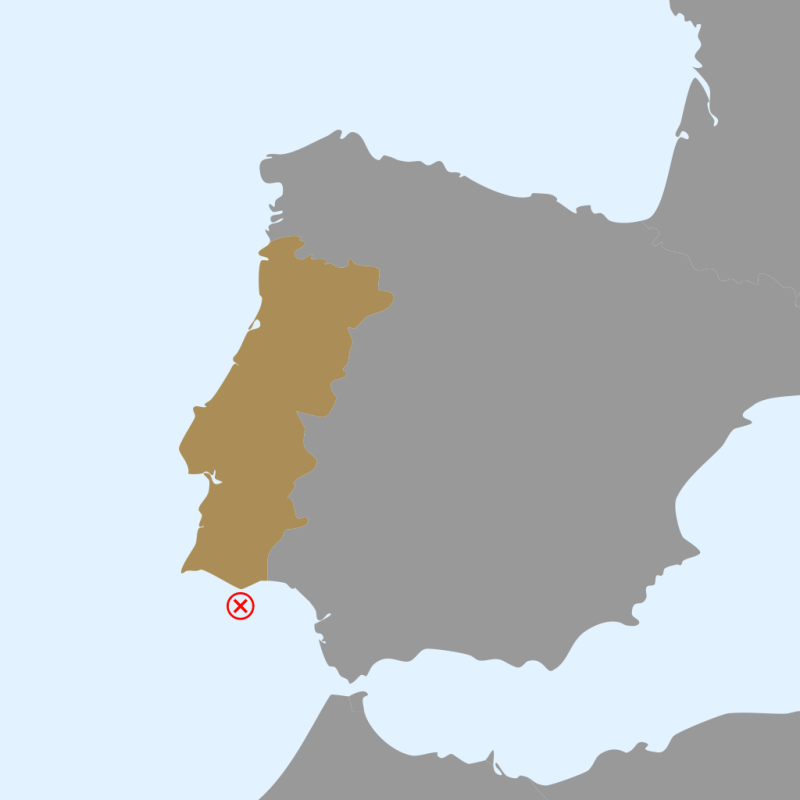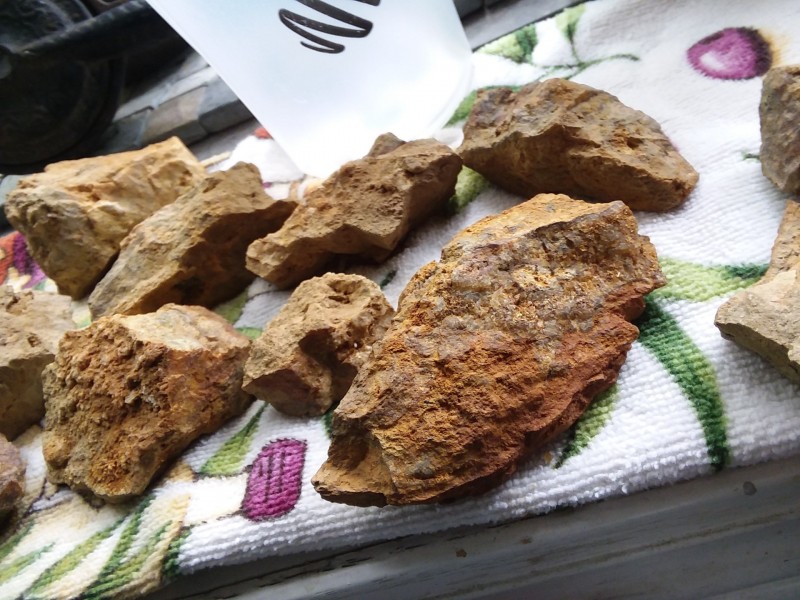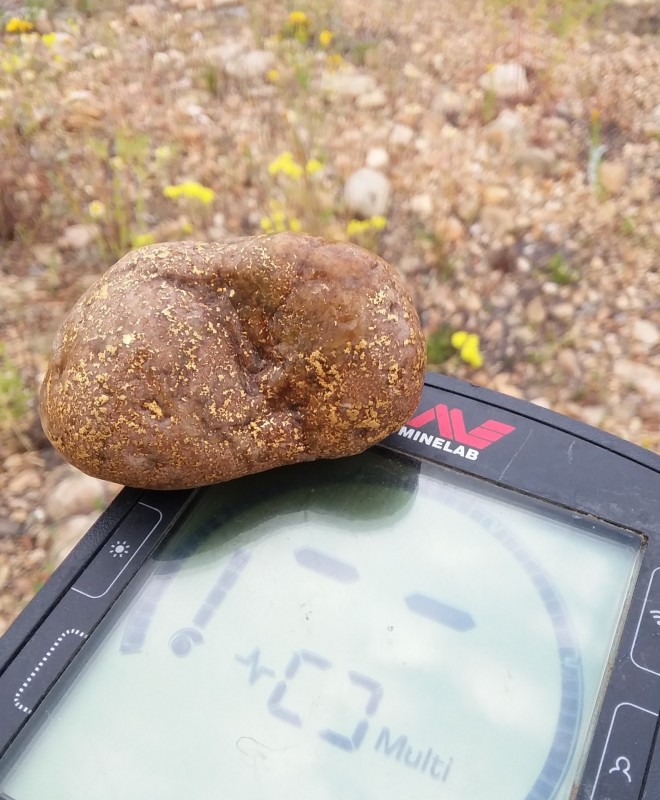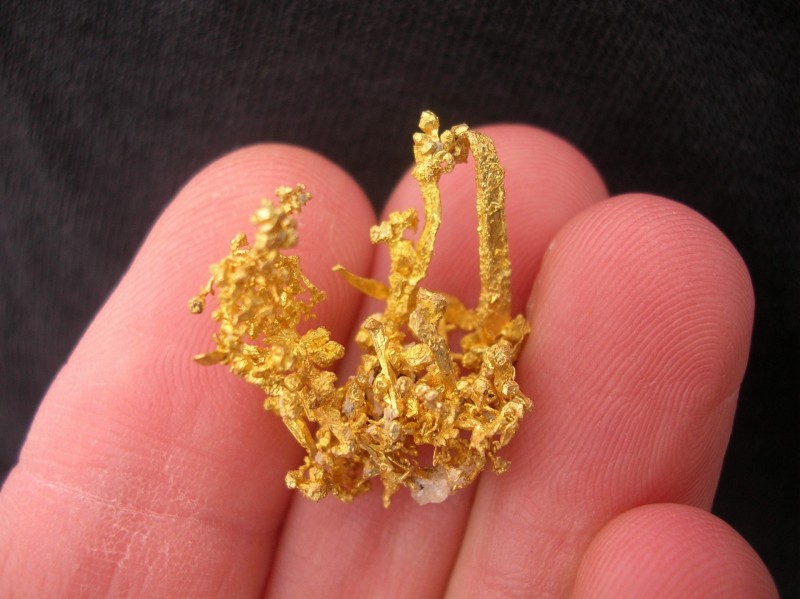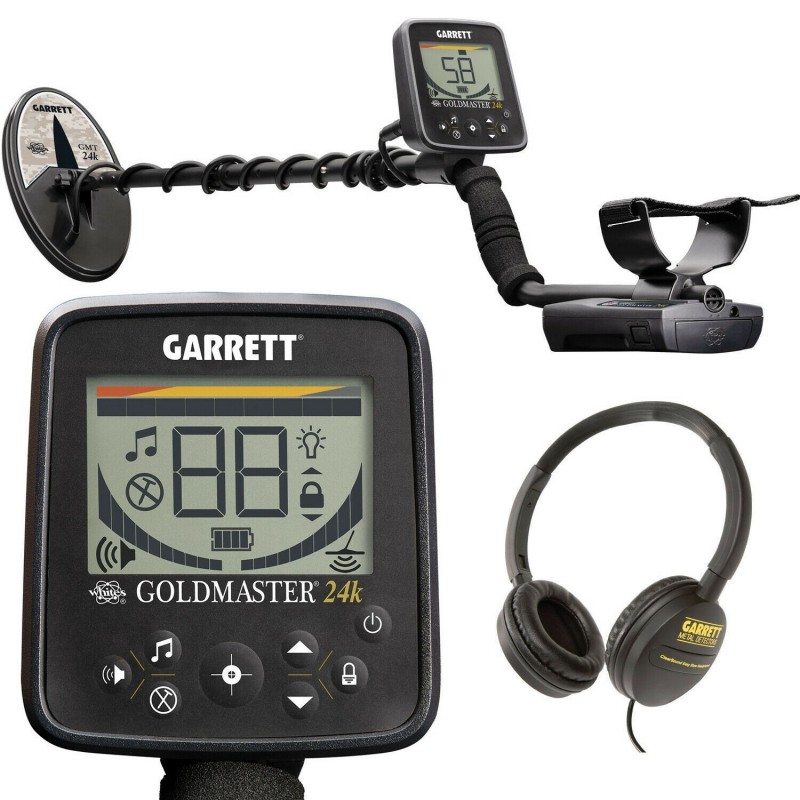Leaderboard
Popular Content
Showing content with the highest reputation on 10/26/2021 in all areas
-
I talked to friend today today who tried the 15 inch on his Nox. He used it for a few months but said it was to noisy here in the bay. It did provide the coverage but he had to make so many adjustments that there was no depth advantage. After he told me that I remembered the same when I tried a few larger coils on the Excalibur. The WOT, and the Detech ULT13.. the 13 was so hot, once it was in 3 foot of water I could not even adjust the sensitivity down enough to stop the noise. Even more interesting is the "AQ's big 12.6 inch coil. It can be noisy but with coil control (And setting adjusting) it is manageable. I just got a 10 inch special made coil for it and I swear that baby is silent. I'm taking the AQ out tomorrow with the 10 in rough waters. See how all goes.5 points
-
As far as actual genuine additions in the form of real additional performance I expect little. GPZ was a genuine breakthrough, as was Equinox, but next generations are likely to be fine tuning of the original breakthrough. Back to what has been disparaged as drip feed, but reality is genuine advances in metal detecting only come once a decade. So I basically expect more of the same, plus other companies piling on with their versions of SMF and PI, all of which will add up to more of the same. More choices in style, feature mix, and price. But more capability that actually makes a real difference in what I can find in any given day? I’m not holding my breath at all. The good news is I’m very content with what I have now, light years beyond what I started with almost 50 years ago. I’ve personally experienced going from detectors with no ground balance, no discrimination, and no depth to speak of, to the fantastic options we have now. I’m way more focused now on finding better ground than a better detector. That’s the ticket to success, not whatever new flavor of vanilla somebody is brewing to part me from my dollars.5 points
-
4 points
-
Got my coil back today (25th) after sending it out last Saturday (16th). I asked for some new washers, and they sent them along with a new bolt and skid plate. The skid plate is not as tight as my original, but it makes it easier to remove! The service was excellent and communication impeccable. It cost me $13.55 for shipping to the facility via priority USPS.4 points
-
It might be OK with the 6000 but would it get off the ground with the 7000 & 19" DOD. 😆4 points
-
I just use the 12V lead off my GPZ battery charger (or you can also use the 12V lead for the SDC Lithium battery) to charge my GPX6000 battery when out bush rather than use the supplied alligator clip 12V charging lead. The other way to do it is to replace the alligator clips with an Anderson plug, most caravan people run an Anderson plug to provide current to the DCtoDC chargers on their rigs. JP3 points
-
3 points
-
Interesting you guys bring up depth. In the water that could be difficult , but done long enough as OBN , you got a pretty good idea. Many moons ago , I actually carried a mini 6' tape measure to check on depth. Then for a few years ( it was posted on the other forum) I put colored tape on my scoop handle. Tilting the point of the scoop on the ground , then measure 12" with a tape vertically , then again at 24". I am confident on eyeballing measurements. But this was more accurate. The problem is , depending on the width of the hole and if you can get your coil to the bottom , is were it can get a bit tricky. I'm sure there are times where the ring was deep and in the side of the hole. And that scoop brought it down. But I know other times I've had that scoop at the bottom 18" and still reading the target solid underneath it. 1 more scoop gets it. Now , It doesn't really matter unless I got a new detector. Then I would just like to know.3 points
-
3 points
-
Early wet Weather in Northern Nevada, sure messed up a few of my hunts! But, this last Hunt was called Rain or Shine! Be there or miss out with the original hunting party. We had half the amount of coils on the ground during this hunt and managed to find a few sweet spots of dinks to add to our pokes. Rain on us with snow in the ground 200’ above us all 4-Days! 6000, Retune Button got a workout. I kept the 11” Mono on. Tried the DD for a few hours with no luck, don’t know if the ground and line I took was bad, but the guys behind me where finding nuggets…so back to the 11”. My truck is out in the drive way in the wet Weather still loaded up with me gear! Getting wet again to unload it, I can’t wait 🤨 Until the next Hunt! LuckyLundy3 points
-
The obvious cheap alternative to using the 18 volt '7000' charger is to repurpose a redundant laptop power supply. They ARE regulated, have plenty of current capacity, and you may have one lying unused; they can be obtained free from family/colleagues, cheap from flea markets/car boot sales etc. They are typically 14V to 18V, use the dropper diode circuit to get them down to 12V or so.2 points
-
I use various cigarette style chargers while in the road, but our cars, or at least the one I have now, do not have “live” 12V accessory plugs unless the car is running, or key in accessory position. My last rig I hardwired in my own always on receptacle. I’m a bit paranoid about it, as I did use the accessory key once, but other things in the vehicle come on, boosting the draw, and I accidentally ran a battery dead. In a bad place, and only got lucky finding a person who could give me a jump. I got an emergency jump kit for that reason. But current car if I want up charge overnight, I’d need to add that always on receptacle, so until then, it’s clip to the battery. Or use a separate charging option. Whatever, lots of ways to go, sure not anything new for me. The worst actually for me was the SDC 2300 and finding a 12V C cell charger that would charge four cells at once - an uncommon item. Even if the battery ran 16 hours I’d have another. It’s not running time for me, but that I refuse to not have a backup, just in case.2 points
-
I know it was all about weight with the 6000 and if it had a heavier longer lasting battery it would be edging even closer to the GPX 5000 weight so at release they wanted it to be as light as possible, however do you think it would be possible over time that they would just release a long life battery for it as an optional extra, obviously it will be heavier but the marketing side of the weight advantage would have done it's work by then anyway and the many users will have told their friends how light it feels so having accessories that add weight wouldn't matter as much as the advantages they bring. My detecting days are usually 8 to 10 hours, normally longer in summer when the days are far longer and I would be a speaker user if I had one that worked so I'm at that point where 1 battery is not enough but a slightly bigger battery would be.2 points
-
If it's priced around $1,000, that would be pretty sweet (although I expect it to be closer to $1,500). That's still too high for me, but it's close enough to the Equinox 800 to impose some serious competition...assuming it performs well, of course. But based on what people say about the Deus, I expect the Deus II to be competitive with other SMF machines.2 points
-
Choices: 1. Wake up and change battery on supplied main charger 2. Use supplied 12 v battery jumpers to charge spare at your leisure. Strick2 points
-
NE, Ive only tried a friends 6000 for a trial and I'm slowly putting gold aside to pay for one.....but bills keep getting in the way 😞 I dont have any ML wireless headphones to try but Ive used all the same brand types from the transmitter brands Ive tried. So far, none have been fast enuff for my liking. If it aint as quick as a set of corded headphones, I wont bother. Gold wise, yeah Im doing OK I spose....nuthin like the good old days though lol. Im sitting at 5.6oz for the year so far....477 bits, 8.5 grammer is the biggest.2 points
-
2 points
-
I grew in the the snow country but the Army brought me to AZ where I got spoiled. I will never leave, I love the heat.2 points
-
2 points
-
2 points
-
Thank you! I sold all in late 2012 when I was sick. I do regret selling then. The last 7 years I've saved most, I have them locked away in a bank in another state. Occasionally, I will have a friend pull them out for me and I'll add to, get a few pictures (or video) then put them back. Someday my grandsons will hopefully be the beneficiaries, if I taught my daugther correctly on how to get the most out of them. I'm very Blessed that I don't need to melt them, but I do send my silver in for melt and do good with that.. A side note, If I hunted the land only my ring count would be about 1 a year, if that.2 points
-
Something similar has already been done. The White's VX3 had the exact same hardware as the V3i but the features (all software) were considerably stripped back. However, all those features are still in there and can be progressively enabled with the right passwords. I think there were 4 levels: the VX3, 2 levels in-between, and the V3i. The thinking was that when a customer got good with the VX3 he could then "buy up" to the next level for, say, $99. It would have had the benefit for White's that a new customer would be less likely to overbuy and get frustrated with the V3i, and for the customer that they could buy only as much as they wanted. The "upgrade" was never implemented, mgmt didn't like the idea. Please don't ask me how to do it; it required running the unit's serial number through a passcode generator that only White's had, and I'm certain that even that has been lost.2 points
-
Not seen such a thing, but not saying it's not been done. But most reports on the NF12 say it's about the same as the stock GPZ coil, just lighter. So you could leap from there to GPZ stock coil to 6000 comparisons, which are GPZ deeper on bigger stuff, 6000 hotter on smaller stuff.2 points
-
I've wanted the 24k since Whites released it, it was all too hard to get with Whites and their very limited worldwide distribution, Garrett is making that easier and has a much larger distribution network around the world so the 24k is becoming more accessible now than it was. I had this one sent from the USA to get it quickly as the New Zealand dealer isn't likely to have any until next year, although I think that'll change when they start getting people asking for them 🙂 I was pleased to see it came with rechargeable batteries to get me up and running fast, a good brand too being Duracell AA NiMH. So a few photos.... starting with the box. Whites fans will be pleased to see all the references to Whites on the box. That looks like Steve's scoop to me 🙂 And the box contents The charger and car adapter, lighter socket to USB adapter and also a power socket with various countries that is like a phone charger really, it just converts the AC to DC 5v 2.1 amp USB power, so you can use any USB charging adapter that can output the 2 amp's to charge your batteries. The charger will also charge on a common 1 amp USB port, it's just going to be slower. Very handy as I can charge the batteries in my Caravan or anywhere really with USB charging. The charger can also charge AAA batteries as well as the AA's required for the 24k, quite handy. The 12v alligator clips charger to lighter socket is very good quality too, nice thick cables and inline fuse. Even the little lighter socket to USB is a good quality product, came in a little package showing it's got a 2 year warranty. It's made by Aukey and has 2 x 2.4amp USB ports on it for fast charging. The charger has Micro USB and USB-C support, so you can use your phone charging cable if you've got one of the many Android phones using Micro USB and forget to bring your Garrett supplied cable. This is the batteries inside the mounting box that slides up into the back of the 24k. They're easy enough to put in there. The battery box has a nice Whites logo on it. You'll see I've already used the little plug they supply to cover over the headphone socket, Good to keep the dust and weather out and I'll likely leave it in there forever. The speaker on the 24k is excellent, nice loud volume so I see little need for headphones unless I'm next to a loud river or something detecting. The screen's nice and big, easy on the eye, every icon and bit of writing is oversized, quite good for people that need glasses I would guess. The buttons are nice and easy to use and you'll note they left the Whites logo on there. The coil's nice, I haven't weighed it yet but it feels light as a feather, and the detector is very well balanced with the batteries under the arm cuff, I've never used one of the Whites detectors with the box under the arm cuff, but I'm seeing how nice the balance is with this style detector. Garrett also supplied little feet to stick onto the bottom of the box so you're not resting the plastic box directly onto the ground, quite a good idea as I generally hunt in very rocky areas. One thing I noticed almost straight away as you don't have to put effort in when you put it down to prevent it from falling over, it naturally wants to sit upright. 🙂 And the back of the control pod, again another Whites logo I think they've done a good job paying homage to Whites, while also putting their own touches on it, a very impressive detector. Now for the meat and potatoes, I took it down behind my house to the river and fired it up, I had no idea what I was doing as I'd only used it for a few minutes but I took a couple of videos comparing how it was operating compared to my Equinox with the Coiltek 10x5" Nox Coil. Take these videos with a grain of salt, I've spent 5 minutes using the Garrett 24k but I found it very easy to use and understand, it can just be a turn on and go detector by the look of it. It handled the ground well, and I was very happy with the sensitivity of it, I absolutely can not wait to get the smaller coils for it, especially the concentric coil. I had put the Coiltek 5x10" Nox coil on the Equinox so it was more like comparing apples with apples and tested both detectors on a small #9 lead pellet. The 24k certainly had the edge on air test depth. The ground performance seems excellent too, I love how quiet it runs, the threshold is very smooth, it's also interesting you can run it right next to the Nox with no interference for either detector, both run fine right next to each other. The build quality of the Garrett seems excellent, the shaft nice and solid and nothing feels flimsy. In this video I take both for a little walk around showing how they handle this difficult ground that's covered in hot rocks. The 24k was completely free of knock sensitivity, something I'm going to find very beneficial with the areas I hunt being rocky. Both detectors have their settings maxed out, the Equinox is on 25 gain. Now I've got to get the batteries charged up so I can use it properly, at least they had enough charge in them from the factory for me to take it for a test run. We are in a 2 week Covid lockdown at the moment, we are expected to come out of the worst of it on Wednesday so hopefully I can go find some nuggets with the 24k soon, judging by my first impressions of it I am sure I will be able to achieve that quite quickly.1 point
-
I want one!!! A little pricy, but this would go pretty good with the 6000!!!1 point
-
Went back to the farmhouse today, Chase wanted some detector time so I invited him down. It was a cold morning, 50s and windy but good for the hard work ahead. Chase got there shortly after I did, my first find was a 1990 nickel, and it really didn't get much better. I had to dump my trash bag 4 times, lots of plumbing parts, matchbox car parts again, molten metal and just about everything that gives a false good VDI and tone. Bullet shells, you name it. 😀 The place is getting sort of lean. Here's what I got, some of it is interesting: The usual clad and memorials, nothing older than 1972. Remains of some kind of brooch with rhinestones, it was pretty mangled but still had 3 stones. A 3 ring bullet flattened, some sort of knob that has a coin edge. The most interesting finds aside from the bullet were the aluminum penny token which is about the size of a quarter, and the small brass "E. Faber" fountain pen tip case which contains a small pencil. The token is corroded and broken so that the date doesn't show, just the bottom of the memorial and "One Cent" on the back. It was a fun day, always good to have Chase along. He found some stuff too.1 point
-
i got only 1 word: xppleasetakemymoney A Tarsacci in Diving version will be good too. RR1 point
-
I can't see the battery being an issue at all. We've always bought 2 batteries if you wanted more that 8 hours detecting time. I've done it for every Minelab I owned, until the equinox would not allow it. I even have a spare for the 5000. Considering how short the battery life is on the AQ, 8 hours on one battery seems like an eternity😄1 point
-
I have one, I bought a guitar from a dealer at a guitar show. About a year later I got a call from some irate guy who demanded I give it back to him, or he'd send the police. He was very nasty, also threatened to sue. I calmly told him I still had the receipt, and he could go for it if he wanted to but the state I bought it and lived in has a law that says anything bought in good faith with a good faith transaction (how was I to know the dealer may have been disreputable?) must be purchased back from the person holding a receipt, stolen or not. Stolen property is a whole 'nother ball game for sure. In any case, no matter where you are, KNOW THE LAW. Ignorance of the law is not an excuse.1 point
-
Hey VL, First off what mode are you using? I use the 10x5 all the time and have dug hundreds of coins with it, so I can give you a general rundown on IDs with it, yes it does seem different than the stock coil. Maybe more accurate 🤔 my IDs come from Park 1: Zincolns are going to be 17-20 depending upon how much is left Good pennies are going to be 21-25, the older they are the higher the ID, I've even seen a 30 in there Nickels 12-15 Dimes are 25-28 Quarters 28-32 Half dollar 32-34 Old silver may be in the 16-18 range, I always dig that one. You are correct in what you see. Noticed it myself. Just adjusted my thinking and drove on... If you're just coin shooting 17-34 is the "sweet spot", but you're going to miss nickels, so you still have to dig 12/15 if you want them. I've had pull tabs (older rectangular type with tab) come up as 18/19 too. Most aluminum bottle caps will be 21-23.1 point
-
That was me, there is something else on the coil that catches the red pulse, guess we will have to wait and see.1 point
-
Good question, but the answer is "I haven't". Not in a testing, scientific type of way at least. All I know is that if there is a lag, it isn't enough to be bothering me. Which isn't saying much though as this sort of thing isn't usually something that worries me too much. However, I do know I tried some bone conduction ear phones which were not Low Latency on the Equinox and that did give me the shits! The bone conduction part was actually fine, the lag was terrible. I'm heading out tomorrow and will take both, space out some coins and lead and stuff and have a little play. I started this thread so I guess I had better give some proper, decently tested feedback 👍 Nice, you're doing well. I've been getting a few nice pieces too but last Friday/Saturday pulled up a skunk. Friday was my first ever at Wedderburn and caught up with a mate staying at the caravan park. We tried a spot where he had found a few bits before. Nothing but lead shot and .22 bullets for both of us. Did a bit of scouting around in the arvo and had a look at where the potato diggings were, etc. Planned on camping out Friday night but a slight, Tier 1 Covid site, stayed with possible contagious people type incident sort of derailed the rest of the day. Once the C-19 issues were sorted during Saturday morn I just had a scout around the Whipstick looking for a new patch and finishing for 2 hours on an old patch. But nothing. Used the 17" coil exclusively both days. Great coverage, nice and quiet but that coil does nothing to eliminate picking up bl@@dy lead shot unfortunately. Rather than a stupid question, I guess this is sort of a statement - you've tried the Minelab supplied headphones. Still a noticeable lag for you? Will any of the other headphones or receivers you bought hook straight up to the in-built GPX6 Low Latency signal rather than using a transmitter?1 point
-
Well, that's fun and all, but I think this would be more practical: BAE Titan XD1 point
-
Hi all. I must ask if anyone has been using the supplied 6000 headphones and checked if noticeable time delay is present, and then try it plugged into the machine and the delay disappears? Would need someone to check a target in the field both ways before digging, cheers sturt1 point
-
I wonder what they plan to price this machine at? Hopefully not a couple grand. I can possibly see it pushing $1500 to put it above the Deus. But it could also replace the Deus. And it will most likely be priced above the ORX. Then you also have to consider the competition, mainly Minelab! The Equinox is submersible, the Deus 2 likely will not be submersible but may be weatherproof. So maybe it will be priced closer to the 800. I'd be happy to see a price around $10001 point
-
Air Force does like their Controlled Climate and I never argued 😂. First time I ever lived in Snow Country and I enjoy it so far. Grew up in Florida and Arizona. I’ll be back home in Arizona next month to hit a few of my old spots if I can remember where they are at! Rick1 point
-
Airforce made you soft. 😄 The Arizona heat made me dislike that white stuff. LOL1 point
-
1 point
-
I know the Nox was running beach 2 with a threshold.. Does that sound right? And remember my Excalibur's are not stock, many modifications.. and I hunt in PP/All metal. I've taken CZ20/21, and other Excalibur hunters and they can't hear the targets either.... I've hunted along side Nox's before but this is the first time that I went thru and picked out faints for them to check and dig. And for the record I did have one guy that had a HOT CZ21, that thing could hear all I heard and even deeper then my Excalibur.. He was getting a 6 gram gold ring at 16-18 inches.. My excal was getting it at 14..and this was on the Jersey shores several years ago...I have done several upgrades to the Excalibur since but that CZ21 was as deep as the "AQ" is.. So what I did, I would find deep faints targets for John in PP using my Excalibur. Most I would have to remove two scoops..about 10 inches? For him to find the targets. He did hear them then but they gave a iron signal ......after a scoop or two he would get a discriminated silver tone .......John is a excellent land hunter, and hunts the water but mostly fresh drop beaches.1 point
-
Nice Indian, great find! You are getting great results with the ORX1 point
-
Look for BiPolar Pulse Induction (ZVT) units with changes to coil voltage/amperage and frequency/timing shift tech (similar to how the 6000 samples on-the-fly) to be the new benchmark in gold detector technology....from Minelab of course. I can see an opening for a 2300-beating small gold specialty detector using the above tech with fast sampling and CC coils, plus a big gold-big depth version with a wide-lobed DOD coil with slow-er sampling. Or maybe a killer 'one unit fits all' adjustable machine to get it all? But thats gonna be a $10K+ detector for sure, knowing ML's expenditure on R&D to get new tech on the board.... Don't quote it as gospel of course....I can just see the logic in this, now that ML have 'let the cat out of the bag' with the 6000. Seems logical to have a hybrid detector using both 7000 and 6000 tech.1 point
-
Never know what you will find. Anything could be anywhere. Now you need to figure out why that was there & what else may be. Nice condition too.1 point
-
1 point
-
I saw a NatGeo Channel TV show about this within the past couple weeks. For those not familiar you can (always 😏) get good info on Wikipedia as to what the TV news left off. This particular ship was found very close to Spain (taken from the linked Wikipedia page): and not from near the USA coast. Also, according the show (if I can trust my memory) the gold wasn't looted from South Americans but rather apparently was a payment intended for Napolean for 'protection' so that he wouldn't invade Spain(!). (Warning: I don't see that mentioned in the Wikipedia article so maybe this speculation is questionable, at best. The Wikipedia article says that Peru, in 1804 still a Spanish colony, disputed ownership but the courts rejected that.) None of this, IMO, gives Spain 100% ownership after a treasure salvage project found it. However, I do wonder (and didn't see it in the TV show) if the salvors knew they were breaking some law (specific to Spain or maybe international) when they found and then recovered it. To really get an idea of how treasure search and salvage missions get complicated (and dangerous!), read the captivating 1998 book Ship Full of Gold in the Deep Blue Sea by Gary Kinder, which covers in detail the research, search, and recovery of the SS Central America off the North Carolina coast. For example, taking time to contact a government to negotiate a deal which Mitchel wondered about might not have worked in that case. (Hint: they were competing with others who weren't bothered by 'principles' regarding tactics -- e.g. spying on the location of the salvage ship.)1 point
-
If the truth be told, Spain shouldn't have been awarded the treasure either, as it was all stolen by conquering Spanish, melted down, and turned into coinage and other items, to be brought to the King of Spain! But because it was on a Spanish "War" ship, their "interpretation" of Maritime Law awarded it to Spain, with the help of our courts!! If nothing else, no matter what country it belongs too, the salvagers should get at least half of the value, for finding and recovering any treasure wreck, and leave the other half to be hashed out between whatever countries think they have a claim!! Unless, there was a deal, or collaboration beforehand, on a known location, so that the salvagers were, at least, compensated for their time, and expenses!! There has to be an "Open Market" aspect involved, or else, who would bother to metal detect, if everything found had to be handed over to the government, with zero compensation! Same with Mining, and Fossil hunting! (Other than illegal/black market operations!) And on the archeological side, Museums would be nearly empty, if not for "Treasure" hunters finding most of "their" (publicly & privately funded!!) artifacts in the first place!! Which would also further their purchase from the Black Market, which none will admit to doing (but it happens!!), but all admonish! Including private collectors!! JMO!! I obviously have strong feelings, and support, for both sides! As not only do I want items to be sufficiently profitable (and legal) to discover, but that it is done in a manner to preserve, protect, and learn from those discoveries that are still in context!! As neither side gets anything, when NO discoveries are being made!! 😔👍👍1 point
-
I am inclined to believe the new XP machine is likely to be innovative, feature-rich, and priced accordingly. If the performance is there (real or perceived) consumers will justify the pricing by way of opening their wallets in gleeful anticipation. That said I also believe XP would be wise to take note of current trend (set by their competition) toward decreased prices for very capable machines. At the very least, XP would seemingly be served well if they made an effort to seriously compete in that segment of the market. With modern machines (for the most part) being software based, I am a bit surprised that we have yet to see a manufacturer offer one machine that can target multiple segments of the market. At this point software delivery is relatively routine; click a link or two, pay the amount required, and download a bunch of new features/performance. From the manufacturer’s standpoint such a system offers significant advantages: Tool and die costs are spread out over multiple (software) variations of the same machine. Physically the base model would be the same exact machine as the premium model. Given XP’s excellent ergonomics, I would think they can use the exact same platform they’re currently using for the Deus (further spreading the costs of manufacturing). A company portal (for loading the new software) allows the manufacturer the ability to bypass the middleman (dealers) and the associated commissions that are incurred - increasing profit margins and presumably allowing for better prices for the consumer. Up-selling consumers to more features/performance is simplified, and customer retention is far more likely when top-line performance/features can be realized for a few hundred dollars (verses spending $800+ for a competitor’s machine). There are significant advantages for the consumer too: A base model offers the consumer the opportunity to try a machine at a lower financial risk, while retaining the option of upgrading their machine to a top-level machine (should they decide to) for a relatively minor investment. The investment (in a top line model) is more easily spread out over time. Buy the base model then update to the top line model later (when desired and the money is on hand). Suppose XP offered a base SMF model at a targeted retail price somewhere around $500-$600. Make it capable of using the ORX wireless backphones (purchased separately) but ship it with the wired phones. Keep it fairly simple, but with enough features/performance to compete favorably with machines like the Vanquish 540, the Apex, and perhaps even the Equinox 600. Want more? Buy and install the premium software (say for $300) and now your machine is unlocked, with all the features and performance that XP is capable of delivering. The machine is now capable of working with the Ws4 backphones and can compete (favorably) with the competition’s top line models. Bundle the unlocked software with the Ws4 backphones and a MI6 pinpointer (at a price that makes that package attractive). I’m not saying that such a business model should happen (concerning metal detectors) or even that it will happen. I’m just surprised that it hasn’t.1 point
-
Hi guy's here is my take on how to best set up your 5000 for any ground. GPX 5000 Setting Explained. Hi guy’s, here is my advice on better understanding and applying settings on the GPX 5000. I believe I know the GPX 5000 very well, I used it to make a good living from its release date until it was replaced by the GPZ 7000. As most of you know I am a professional prospector, to be successful as a prospector you must understand your tools and their capabilities and limitations and know how to apply them for greatest effect or you will quickly go broke. So when I get a new tool or detector I do rigorous testing and comparisons to understand its strong and weak points so that I can apply it to greatest advantage and thus recover more gold and have a better lifestyle as a result. I spend around 8 months 7 days a week 10 to 12 hours a day prospecting with about 90% of this time detecting the other 10% rock chip sampling or stream bed sampling to prove prospective leases. This equates to over 2000 hours per year detecting to give you an idea on how much time someone like me spends swinging their detector. I also travel to different Gold fields all over the country that have wildly different soil and bedrock compositions. Below are the settings explained and my take on how to use them to their full potential, I have a philosophy... “If I am going to own a Ferrari I am going to drive a Ferrari, and drive it hard!”. My settings reflect my philosophy and are not for the feint of heart. Front Panel Search Mode switch: each setting activates a group of Minelab preselected settings for the particular scenario. They are all reprogrammable so it basically gives you 5 modes that you can pre program and have ready at one flick of a switch. I change all of them to suit my needs and just remember what switch they were under so I can quickly select them on the fly without having to go through the whole menu and changing every setting, say when I want to pinpoint or check a questionable target for example, I will select the mode I have my amped up pinpoint settings under. The switch activates the following settings: General, Deep and Custom, Custom also activates Patch, Hi-Mineral, Hi-Trash and Pinpoint. So you basically have 5 groups of settings that you can have preprogramed to suit your needs and quickly select on the fly. Soil/Timings switch: Normal, best general performance and is particularly good for long time-constant targets. But suffers in areas that have long time constant ground signal. This timing is very good in mild mineralisation or areas like stream beds that have lower mineral content than the flats hills or terraces that may be higher mineralisation. Enhance: this timing clips some long time-constant signal and a smaller amount of fast time-constant signal, it is very good in highly mineralised ground or areas with a lot of hot rocks and it also has some clipping of fast time-constant signal that can eliminate false signals in some ground Special: If you choose Special on the Front Panel the following settings will then be selectable on the Rear Panel under special. Sensitive Smooth: only use for very severe soils. Sense smooth clips both the long and fast time-constant signal to eliminate these types of ground signals hot rocks ect. But it will cost you targets that fall within this range. Fine Gold: Fine Gold is similar to Enhance but is much more open on the fast time-constant end of the timing. This makes it way more sensitive to smaller targets whilst it has similar capabilities to Enhance on larger targets. It ignores a lot of hot rocks and ground signal a very powerful tool once understood. Sensitive Extra: this timing is similar to normal but is more open on the fast time constant side and a bit less on the long time-constant side. It is useful in mild ground on smaller targets but increases hot rock signals with mono coils. Its good with Double D coils for smaller targets in mineralised ground too, very useful for crumbing in bedrock with a small coil. Salt/Gold: For very salty areas - salt lakes, high salt content gold fields. Sharp: Is the most powerful timing on the 5000 it has a larger detection field and is more open on the long time-constant side of the timings than normal but this makes it very susceptible to ground signal. I have found it very useful on larger deeper targets in mild ground with a mono coil. But this timing really shined with a large 20in concentric coil that I had made for finding larger targets in mineralised ground and it also worked a treat on the larger DD coils too, one of my favourites was a 14in DD that I even ran in basalt soil in sharp with great success. Coin/Relic: I only used this in Europe for treasure hunting. Coil/Rx: Double D, Mono and Cancel, I have foam stuck between the case and the switch so that it keeps the switch in Double D and the switch cannot accidentally be knocked into Cancel, you can run the switch in DD for both monos or DD coils. And I never want the detector to accidentally be knocked into Cancel as you loose most of your performance and there is no way I want to be walking around for hours or who knows how long wasting time walking around in cancel then having to go back over the area again! Ground Balance: Tracking or Fixed, I always use Fixed, except in highly mineralised variable ground. Threshold: I set this to a faint but clearly audible hum, this was generally at about 3oclock on the knob, I usually re adjust it after changing the other settings below as well, particularly the Target volume setting, which you play against eachother to amplify targets but tame chatter. Auto tune: Always perform an auto tune on detector start up or if EMI increases re-auto tune the detector. Back Panel Volume limit: Set this so that a loud target dose not blow off your ears. Ground Balance type: general, specific and off, I nearly always use general except in the worst Iron rich ground that requires special. Special: Explained above. Manual Tune: I usually just use auto tune but I always make a mental note of what frequency it ends up on. Motion: Very slow, Slow, med and fast. I nearly always use very slow or if it is very quiet ground I might use slow. This is a filter that modulates the audio to suit your swing speed. I use this setting in conjunction with Quiet Audio type to tame Threshold chatter whist maintaining the target response on very small or very deep edge of detection targets, this allows me to run very high gain and stabiliser settings and greatly enhances target response. Rx Gain: Range of 1 – 20 I pretty much leave it at 20 unless I’m running Sharp or Sens Extra timings which may need to be run quite low even below 10. Sometimes I use this setting to tame ground signal in more extreme ground conditions, but I never use it to deal with EMI or Threshold chatter ever! Or it will cost you performance that you don’t need to give up! Audio type: Boost, Normal, Deep and Quiet. These settings modulate how the signal is processed and which part of the signal is more amplified. My favourite is Quiet as it has a linear profile which makes the EMI chatter less amplified and gives a better amplification of the target response when other settings are run high. Basically it trims chatter but strengthens target range signals when your other settings are set to suit. Audio Tone: Set it to suit your hearing. Higher tones for younger people for older people or if your like me with industrial deafness a low tone can be better. My sweet tone is 30, find your tone by getting a small nugget and tape it to a stick at barely audible depth, this is to make a control signal now swing the nugget over the stationary coil and play with the tone setting until you find the tone at which the faint target is loudest or easiest to distinguish, this is the best way to set your tone to find gold! Do not make the mistake of setting your tone to make the Threshold sound nicer like most do! We are after targets not Threshold! Stabiliser: The stabilizer is a filter that is used to tame the high frequency noise or chatter that is usually the product of EMI. I never use this setting to deal with ground noise ever! I just use this setting to smooth the Threshold chatter down until tolerable. Do not use it to deal with ground signal as you have way better setting options for that and you will just loose performance that you don’t have to! Most of the time in the morning this will be set quite high but as the day heats up and EMI increases it will have to be lowered to suit. High for me is 20 and I almost never go below 11. I always adjust this setting after auto tuning and with the detector stationary and facing the the way you are detecting! Signal peak: 1 to 20. I run this at 20 as I want definite targets, lower numbers cause blending and sound mono tone which can cause missed targets. Target Volume: 1 to 20. I run this setting at 20 nearly all of the time this is an amplification filter that amplifies target response, it dose make the Threshold louder at high numbers but you just lower the Threshold until it is at the right level as discussed above. What you are left with when properly played against the Threshold is amplified target response and a good Threshold volume. Response: normal and inverted. I use normal as I never used AI DD coils. Tracking speed: slow, med, Fast. I nearly always used slow and fixed GB but if the ground is highly variable I use tracking and the speed that just keeps up with the ground variations. Iron reject: I leave Iron reject off because the GPX is un reliable at Discrimination. I use a VLF detector if trash density calls for it. Range of Motion Understanding Range of Motion and its effect on how targets are heard or not heard because of it is one of the most important aspects of learning your metal detector. Once learned targets stand out more and you can use it to separate false targets from definite targets by modulating your swing speed, this can’t be learned from reading you must do testing of your range of motion skills and learn every new detectors best range of motion by testing it over known buried targets and known false signals like termite mounds or hot rocks for example until you become proficient. Spend time doing this and it will reap rewards for you.1 point
-
64 replies and over 6000 views so far.... I'd not worry about the fine details Trevor. Best advertising dollars you'll spend this week! I'll take this opportunity to thank you for dropping by - your posts are always appreciated, and of great interest to forum members. Do make it more of a habit, as we all have extreme interest in anything you are making for any detectors. That 6x10 for Equinox, by the way, truly a superb effort, looks more like Minelab made than aftermarket - well done!1 point
-
Terry, So good to see you again on DP and hopefully things are going well back in NC. Last time we chatted I think you met me at Atlantic Beach and I showed you a water detector? Those that don't know Roughwater (Terry), he's a long time ago client of mine who drove out to NV and took one of my classes, this had to be early 2000's, maybe 03/04? Is this your rig you drove across the USA Terry? During the training Terry scored the gold he selected as his name on DP. Those were great days and it's amazing we still find stuff out there. As for the EQ-800 and seeing gold targets the bigger detectors do not. YES that's a fact and something I now share (have been for the last 10 yrs) during the 3 Day Field Training. Yes the Equinox 800 is a capable detector than can find smaller bits of gold a Pulse Induction or the GPX can not see. Also, the 800 can find high grade ore from hard rock piles the SD's, GP's, GPX's (including the new GPX-6000) and the GPZ can not see. The pic below is over an ounce gold Au after crushed (13 pieces) and my GPZ-7000 did not hear one of them. The EQ-800 found them all. Pictured below is an Idaho Specimen (1 of many) the bigger detectors can not see. And finally here is a nice wire gold specimen the big detectors don't see. Yes I get people who will down me and think I'm trying to talk down a GP, GPX and GPZ, but when I offer a friendly bet for their bigger detector, they back down. So many know it all snowflakes on the forums and social media these days, I get to the point it's not worth wasting my time. In actuality for me and those of my customers who know, it's just more gold for us as we realize the importance of still TODAY needing a quality VLF gold detector and because of the features on the EQ-800, my staff and I prefer it. Are there other VLF's that can see these types of gold better than the big machines? Most certainly and the new named Garrett GoldMaster 24K model (previously White's detector) is still one of my favorite "Gold Only" VLF detectors. So which ones is best? I wish the answer was that easy and some people think it is, but since I spend so much time in the field in many states and 2 other countries on occasion hunting a variety of kinds of gold with so many different detectors, it's kind of silly in fact, but the knowledge gained has helped me understand more than the average dealer and or customer, what the capabilities and or lack of the different detectors and what they see and or can't hear. By no means does this make them a bad model of detector, it's just the facts. There is not one detector that does all the gold, but there are a couple that do the majority of gold and that's what's most important. As those who have taken the training know, we enjoy comparing detectors, technologies and coils to targets in the ground and as we remove soil and get closer each time. This allows us to see when and or how close a certain detector or coil can start hearing a real signal. See pic below. What do my Field Staff and I enjoy most for our gold hunting detectors? The Equinox 800, the GPX-6000 and the GPZ-7000 in no particular order. Yes I still have staff who are using the GPZ-7000 but only for the certain situations. If I could only afford 2 detectors, then the GPX-6000 and EQ-800 would be my 2 choices. Hopefully this helps everyone as I realize most folks don't have the means to test the majority of detectors and on many variations of gold nuggets, specimens and ore dumps. The reality is in the US, there actually is quite a bit of gold left to be found. Just need to make sure you have the right detector (tool) for the task. Later this summer/fall I'll be doing some serious comparisons and testing of my specimens to see how much better than GPX-6000 is vs the GPZ-7000 as I know the GPX and it's improved technology will outperform the almost 7 yr old technology of the GPZ. But by how much is another question. In my opinion who cares? The other benefits of ergonomics, weight, and such already spoken about of the new GPX-6000 are already proven.1 point
-
There is no assuming......the warranty will not be transferable. It is 5 years and applies to the original registered buyer only. With the second coil I might go $275, tops especially if shipping costs are added on. There are so many different versions of the F75 that you have to shop carefully. The discontinued F70 did not have variants and the currently produced Teknetics Patriot which is exactly the same detector are somewhat different from all of the F75s. They weight less by half a pound and at least where I detect, they are more stable. If I really wanted an F70 I would not hesitate to buy a Teknetics Patriot new from Amazon or Teknetics Direct since the 5 year no questions asked warranty is worth the extra $99 in my opinion. I have used that warranty on several FTP detectors in the past.1 point

.thumb.jpg.d71314a45f3dc82bf75ac1b96e7e9201.jpg)

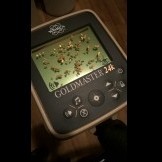
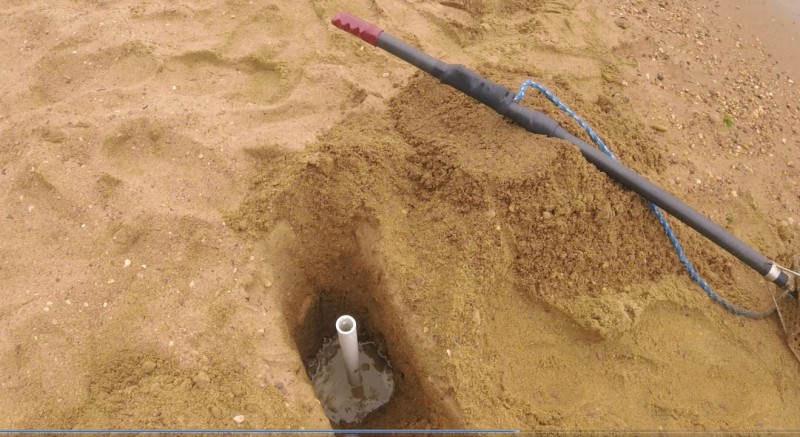

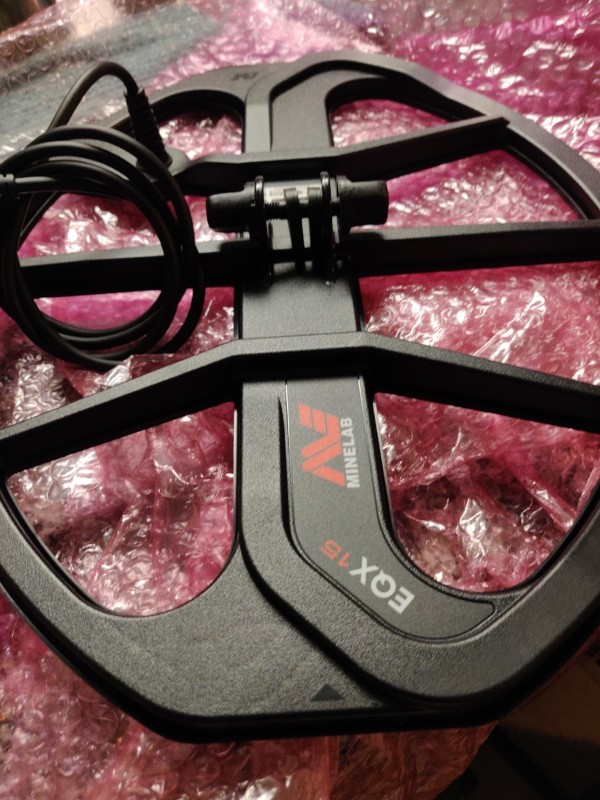
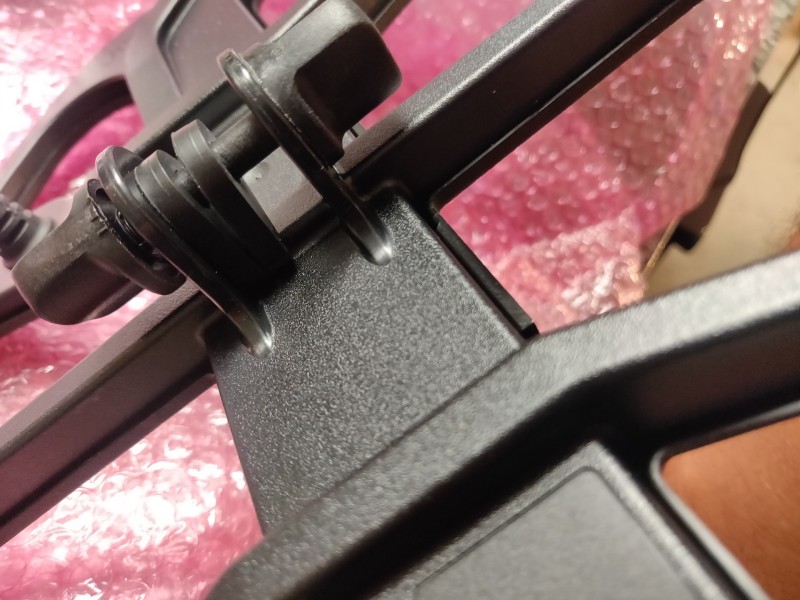

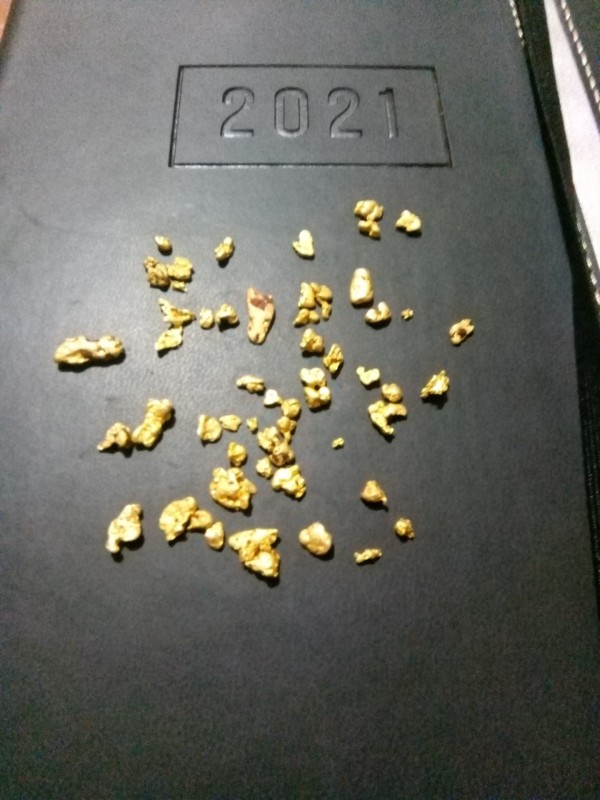
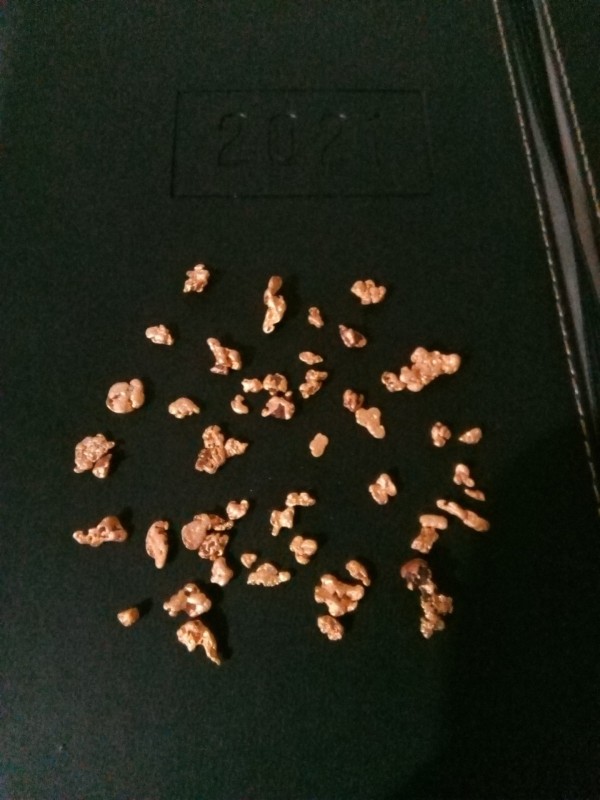
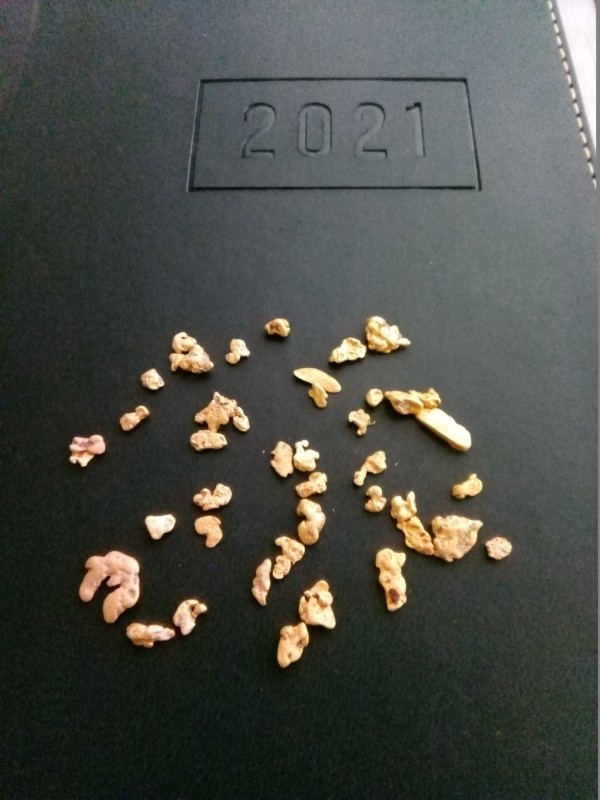
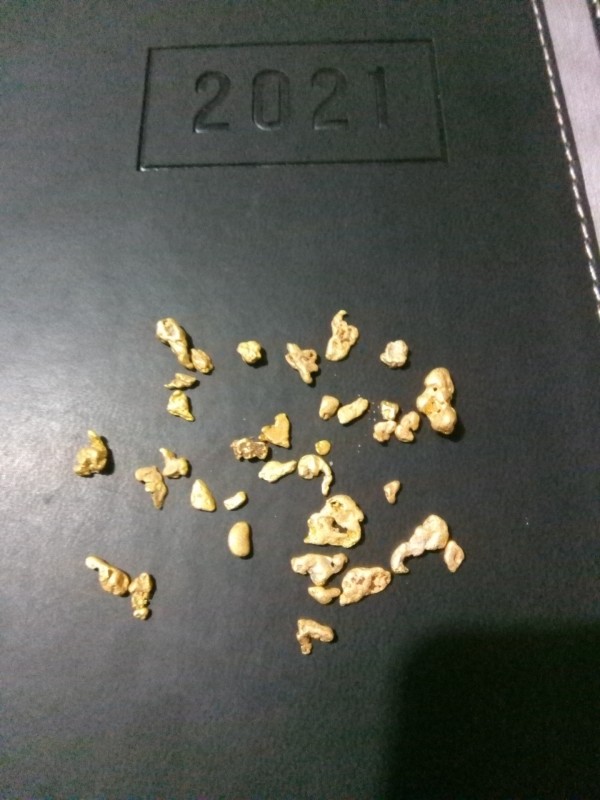


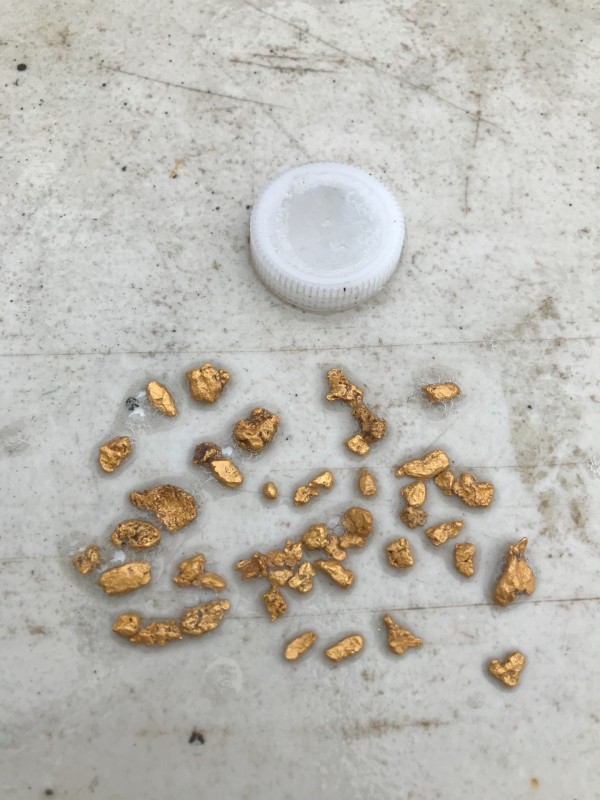
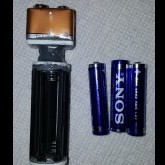


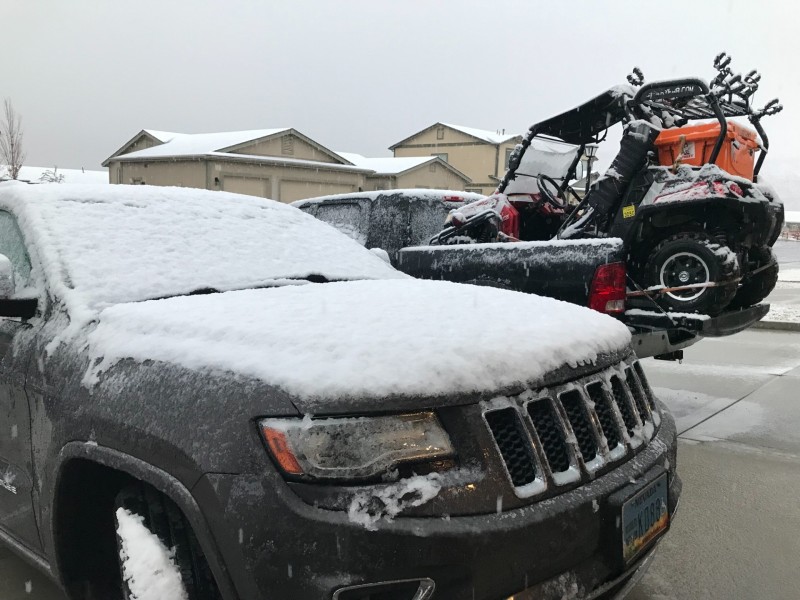


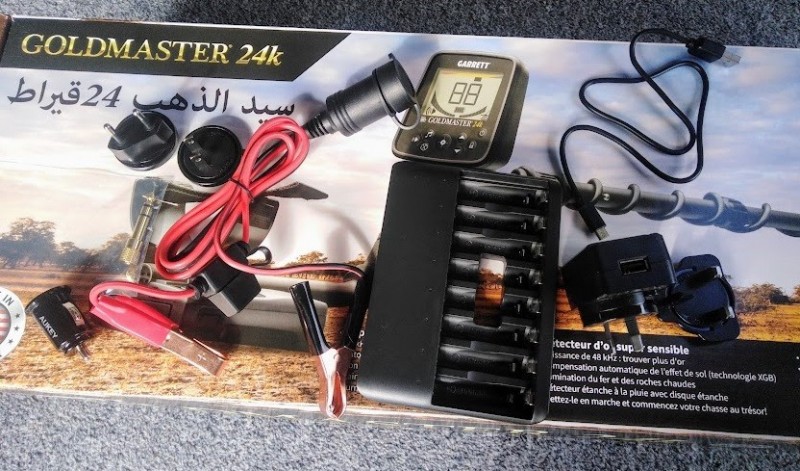
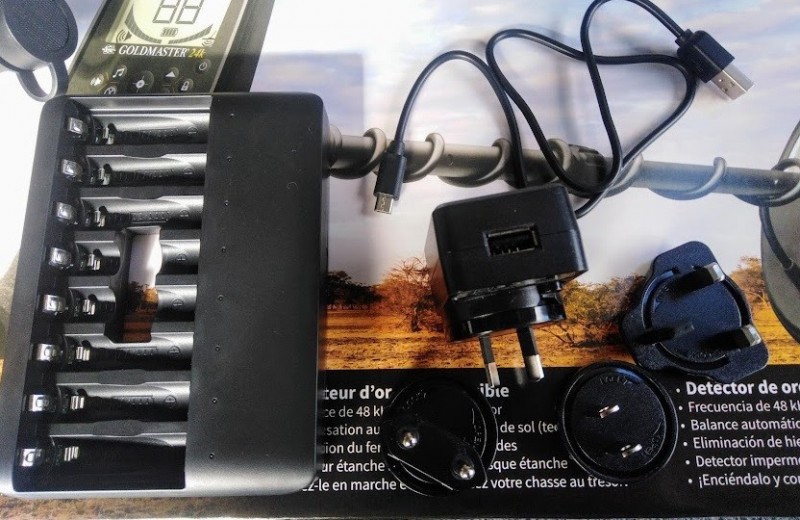
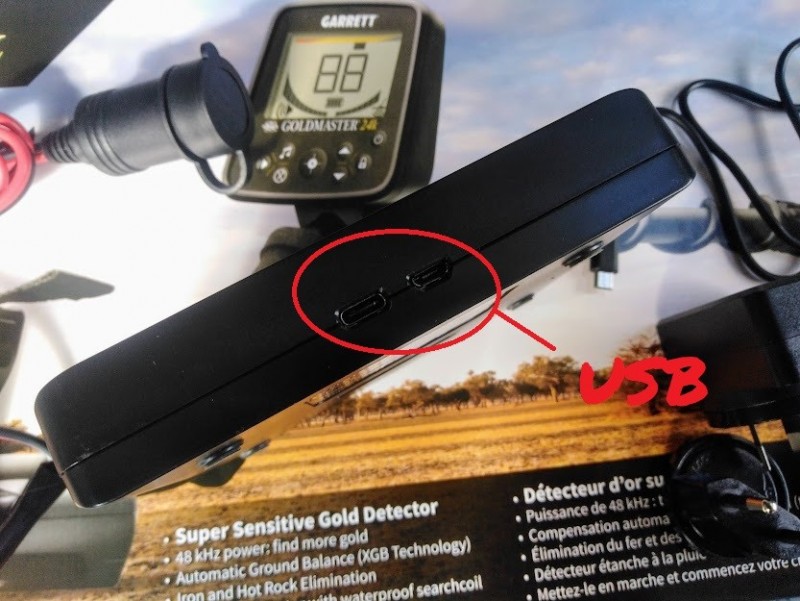
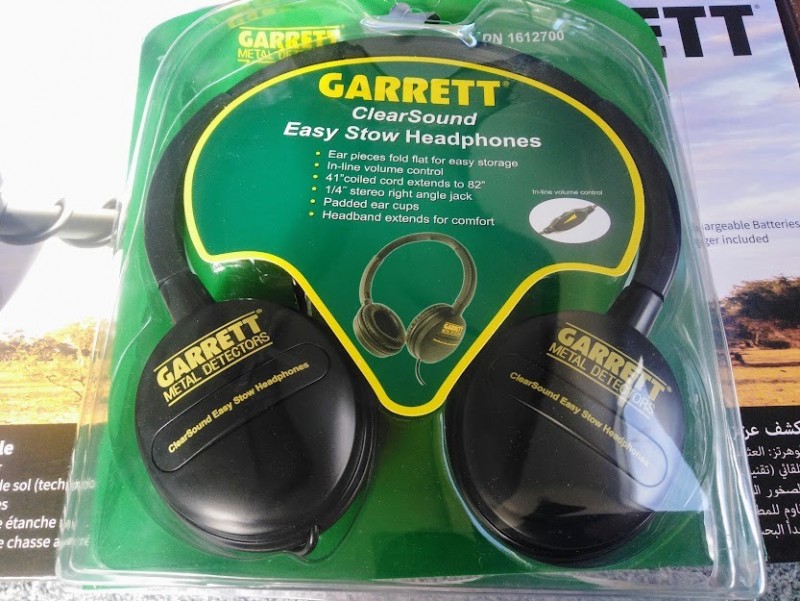
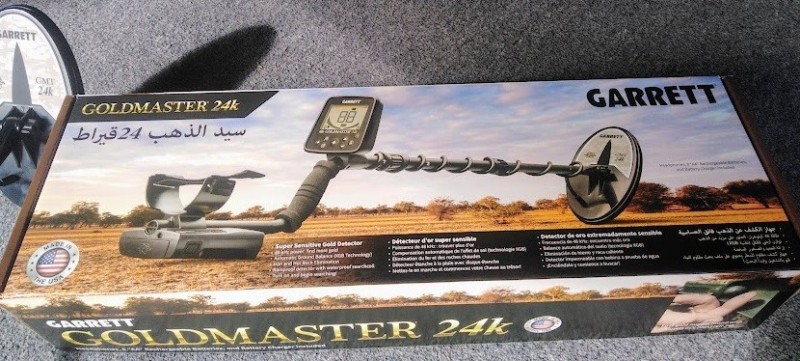
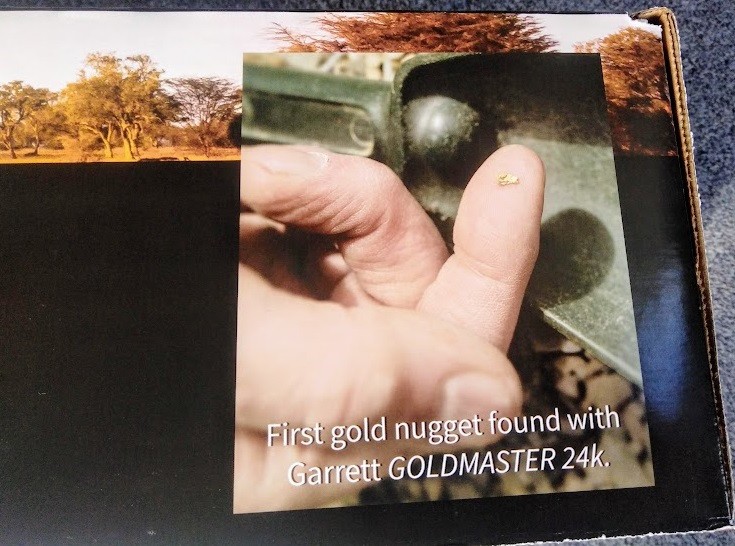
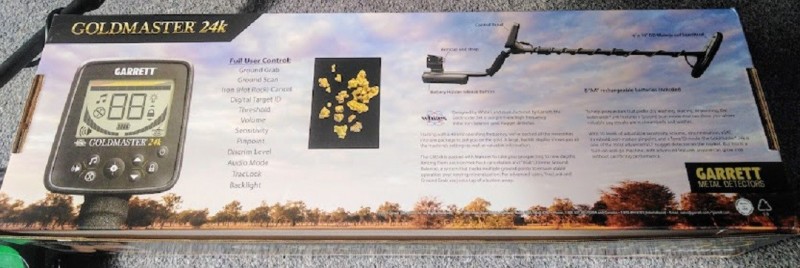
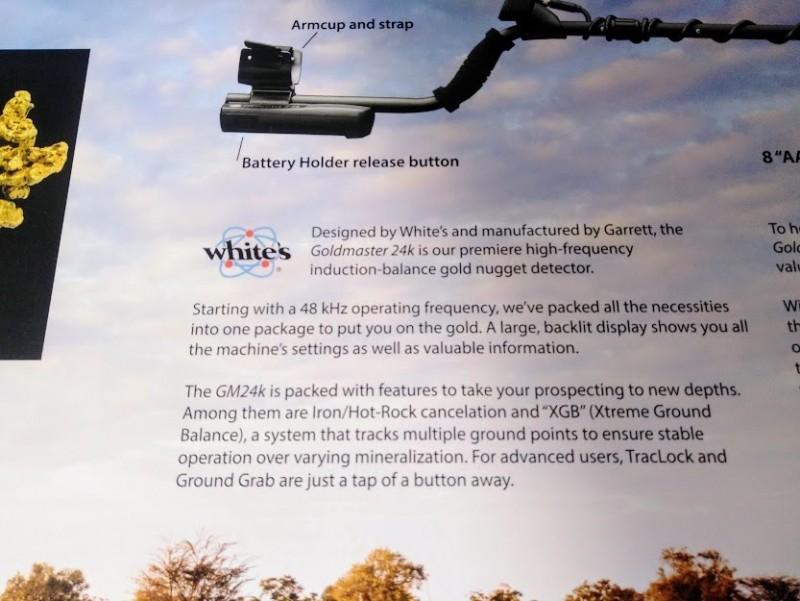
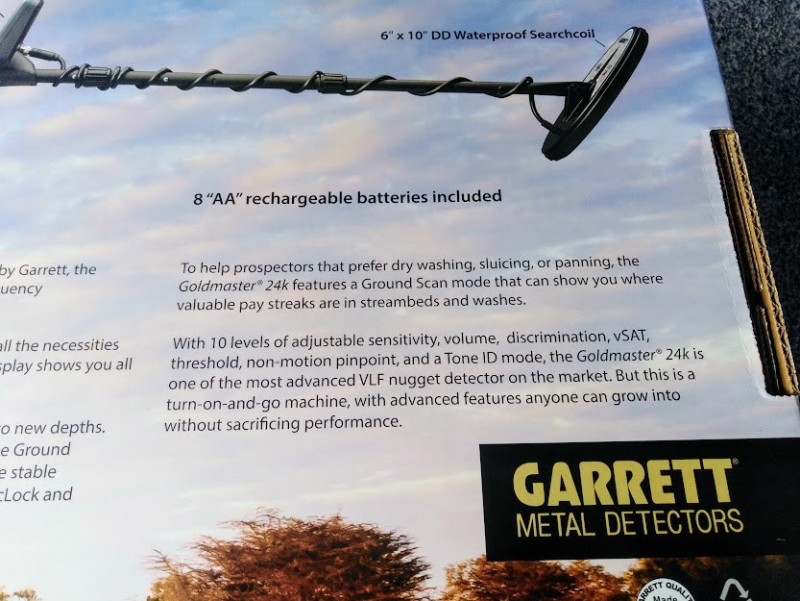
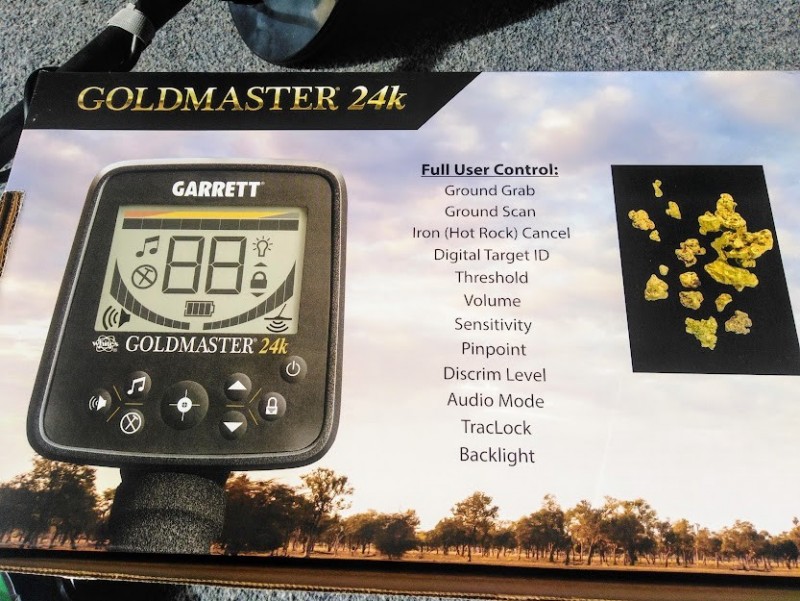
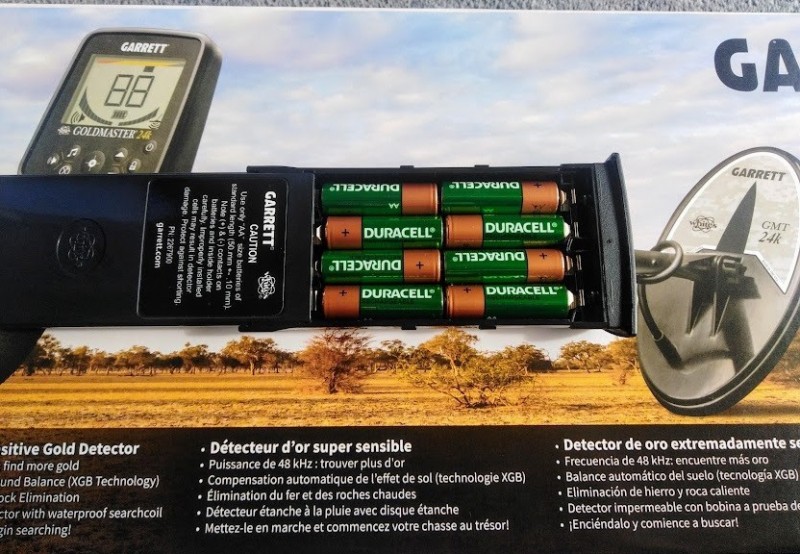
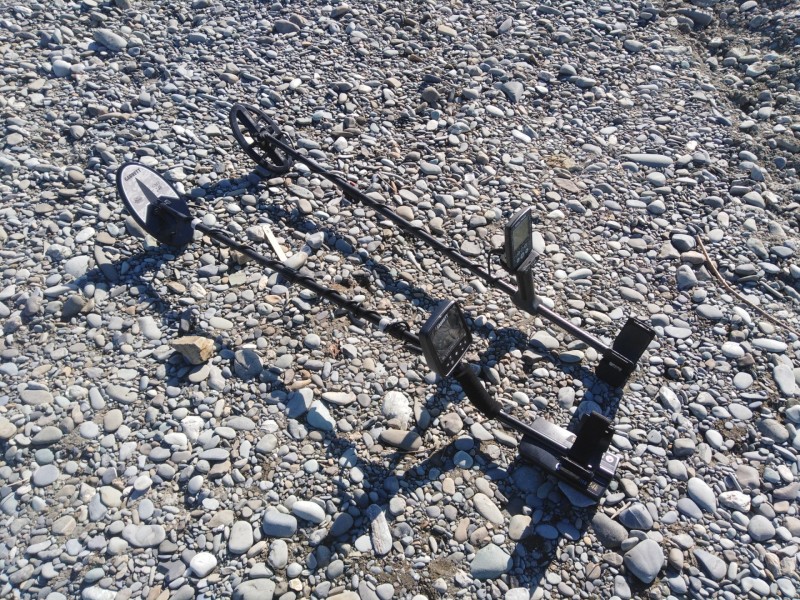
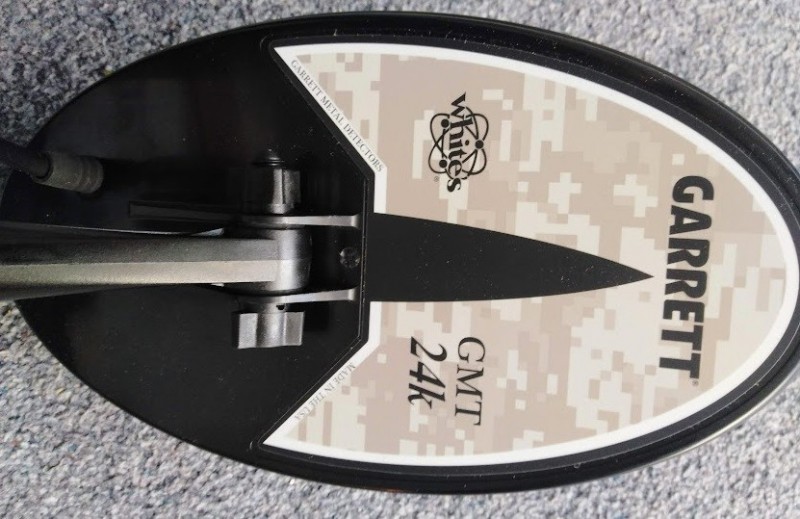
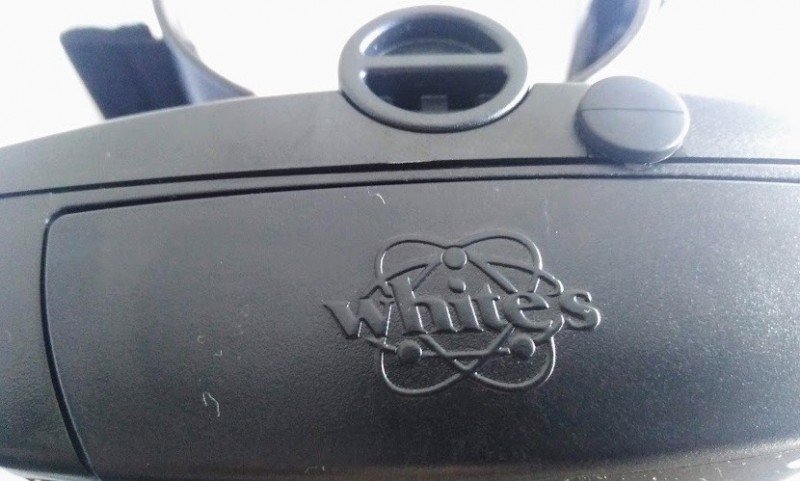
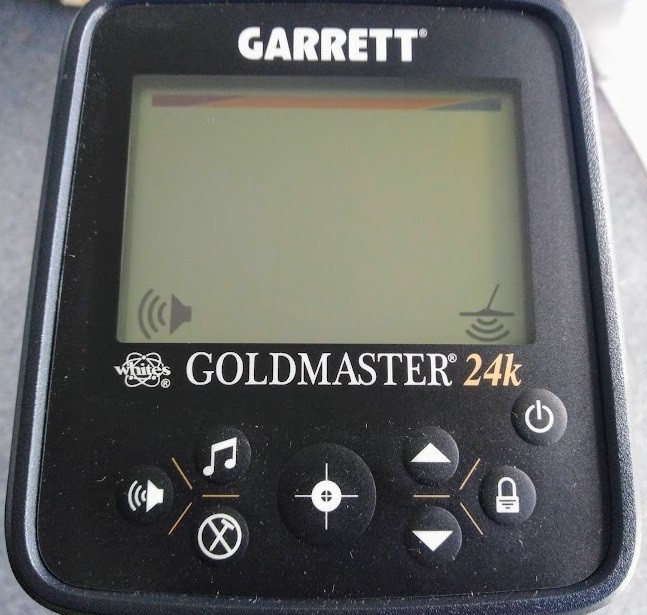
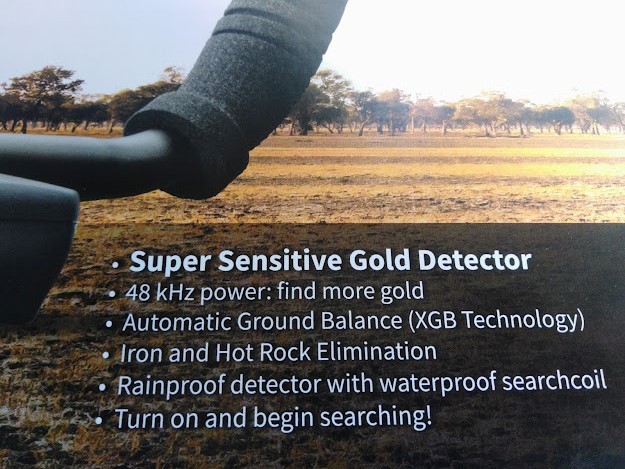
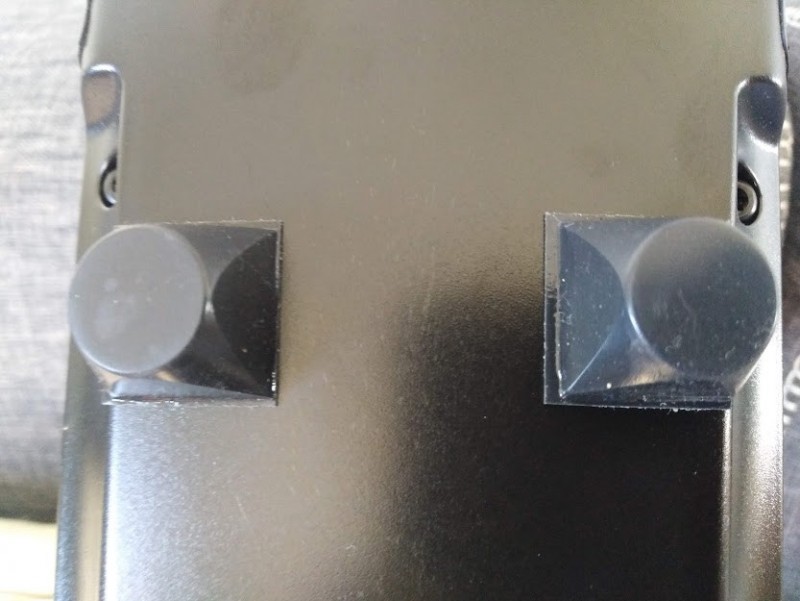
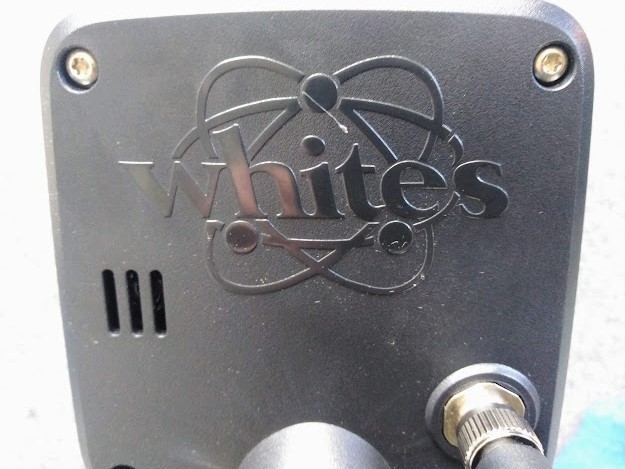

.thumb.jpg.8761b3d9b3da119b9e6d1912f67275ad.jpg)
